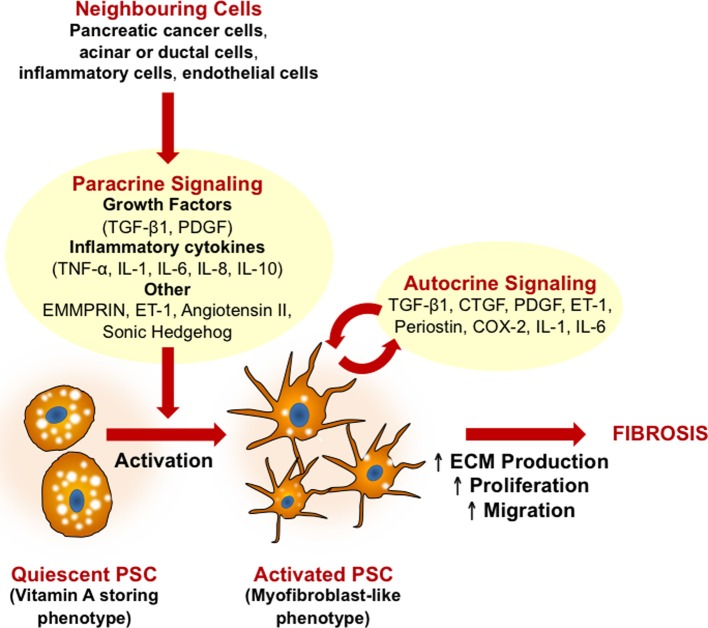Figure 1.
Mechanisms of pancreatic stellate cell (PSC) activation. A central feature of PSCs is the transformation from a quiescent (fat storing phenotype) to an activated (myofibroblast-like phenotype) state. Growth factors and pro-inflammatory cytokines released by neighboring cells (pancreatic cancer cells, injured acinar or ductal cells, inflammatory cells, and endothelial cells) all induce PSC activation. Activated PSCs can then perpetuate this activation state via autocrine stimuli, leading to increased proliferation, migration, and excessive ECM production. In pancreatic cancer, activation of PSCs leads to the production of extensive fibrosis which in turn contributes to disease progression, metastases and chemoresistance. CTGF, connective tissue growth factor; COX-2, cyclooxygenase-2; ECM, extracellular matrix; EMMPRIN, extracellular matrix metalloproteinase inducer; ET-1, endothelin 1; IL, interleukin; PDGF, platelet derived growth factor; TGF-β, transforming growth factor β; TNFα, tumor necrosis factor α; TRAIL, TNF-related apoptosis-inducing ligand.

